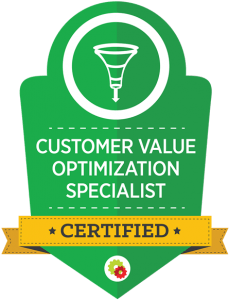How to Prepare Your SEO Strategy for the Fall Season
As the fall season approaches, many businesses are preparing for a busy quarter filled with holidays, seasonal promotions, and changes in consumer behavior. To maximize the benefits of this time of year, it’s crucial to fine-tune your SEO strategy to reflect seasonal trends and optimize your site for search engine visibility. Whether you’re running an e-commerce site looking to capture early holiday shoppers or a service business capitalizing on seasonal demand, updating your SEO for the fall season is key to driving traffic and increasing conversions. This detailed guide will help you prepare your SEO strategy for the fall and ensure your business is ready to make the most of the season.
The fall season brings significant changes in customer behavior as people begin planning for back-to-school, Halloween, Thanksgiving, and the upcoming winter holidays. To align with these shifts, your SEO strategy must adapt to the season, ensuring that your website ranks for relevant keywords, delivers seasonal content, and meets consumer expectations.
Search engines reward businesses that stay relevant and timely, and by focusing on seasonal trends, you can capture a larger share of organic traffic. Preparing your SEO strategy for the fall requires attention to several areas, including keyword research, content creation, on-page optimization, and technical SEO. Let’s explore how you can optimize your site to perform well in the fall season.
Why Adjusting Your SEO Strategy for the Fall Season is Crucial
SEO is not static—it evolves alongside changes in search trends, consumer behavior, and seasonal demand. Fall is a critical time for businesses to adjust their SEO strategies to:
- Capture Seasonal Traffic: Fall brings a surge of search queries related to holidays, shopping, and seasonal activities. By adjusting your SEO strategy, you can align your site with these search trends and capture high-intent traffic.
- Prepare for Major Sales Events: Fall is home to major shopping events like Black Friday and Cyber Monday, which are massive opportunities for e-commerce sites. Optimizing for these events early ensures you’ll rank well when the time comes.
- Stay Competitive: Many businesses ramp up their marketing efforts in the fall, making it crucial to maintain and improve your search rankings. A proactive SEO approach helps you stay competitive in a crowded online marketplace.
- Support Other Marketing Channels: An updated SEO strategy supports other fall campaigns, such as social media marketing and email promotions, by driving organic traffic to your landing pages.
Steps to Prepare Your SEO Strategy for the Fall Season
Optimizing your SEO strategy for the fall season requires a multifaceted approach. From identifying seasonal keywords to enhancing site performance, here’s how you can effectively prepare your SEO strategy for the upcoming fall.
1. Conduct Fall-Specific Keyword Research
Seasonal keyword research is essential for capitalizing on the changes in search behavior that accompany the fall season. Consumers start searching for fall-related products, activities, and holidays, so it’s important to target keywords that align with these trends.
How to Perform Fall Keyword Research
- Identify Fall-Related Keywords: Use tools like Google Keyword Planner, Ubersuggest, and SEMrush to identify keywords specific to the fall season, such as “fall fashion trends,” “Halloween costumes,” “Thanksgiving recipes,” or “Black Friday deals.”
- Look for Long-Tail Keywords: Long-tail keywords that are more specific, such as “affordable Halloween decorations” or “best back-to-school supplies,” often have lower competition and higher conversion rates.
- Analyze Competitor Keywords: Use tools like Ahrefs or SpyFu to analyze what seasonal keywords your competitors are targeting, and identify gaps or opportunities for your business.
- Use Google Trends: Google Trends is a valuable tool for spotting trending fall-related search terms. It allows you to see how interest in specific keywords rises and falls over time, giving you insights into when to start optimizing your content for fall.
Focus on Local SEO for Fall Events
If you’re a local business, fall may bring events and holidays like harvest festivals, local craft fairs, or Halloween events. Incorporate location-based keywords into your strategy, such as “fall festival near me” or “Thanksgiving dinner in [city name].” Make sure your Google Business Profile is up-to-date with fall hours, promotions, and relevant seasonal information.
2. Create Fall-Themed Content
Fall-themed content is an excellent way to engage with your audience, build brand relevance, and improve your SEO performance. By producing timely, seasonal content, you can attract users searching for fall-related topics and drive organic traffic to your site.
Content Ideas for Fall
- Seasonal Blog Posts: Create blog posts around fall themes that resonate with your audience. For example, if you run a fashion e-commerce site, write about “Top Fall Fashion Trends for 2023” or “How to Layer Clothes for Fall Weather.”
- Gift Guides: Prepare fall holiday gift guides for upcoming events like Halloween, Thanksgiving, and early holiday shopping. For instance, a blog post titled “Best Thanksgiving Hostess Gifts” can capture holiday traffic.
- How-to Articles: Instructional content works well for SEO and user engagement. Create how-to guides, such as “How to Prepare Your Home for Fall” or “Easy Halloween Decoration Ideas.”
- Promote Fall Events: If you’re hosting or participating in fall events, write blog posts or create landing pages that promote them. This could include local events, sales, or community activities.
Optimize Existing Content for Fall
If you have evergreen content that can be updated for fall, revisit those pages and adjust them for seasonal relevance. For example, if you have a popular blog post on “Healthy Dinner Recipes,” consider adding a section with “Fall-Inspired Recipes” featuring seasonal ingredients like pumpkin or squash.
3. Update Meta Tags and Titles with Fall Keywords
Meta tags (such as meta titles and descriptions) are critical for SEO, as they help search engines understand your page content and encourage users to click on your link in search results. Updating your meta tags to reflect fall keywords can improve your site’s click-through rate (CTR) and relevance.
Best Practices for Optimizing Meta Tags for Fall
- Include Fall Keywords: Incorporate fall-related keywords into your meta titles and descriptions. For example, change “Affordable Home Decor” to “Affordable Fall Home Decor Ideas.”
- Use Seasonal Language: Add terms that evoke the season, such as “cozy,” “autumn,” “fall,” or “seasonal,” to attract users searching for fall-specific products or content.
- Create Urgency: If your fall campaigns include limited-time offers, create a sense of urgency in your meta descriptions with phrases like “Shop Now for Fall Savings” or “Limited-Time Fall Sale.”
4. Optimize for Fall Shopping Events (Black Friday, Cyber Monday)
The fall season is home to major shopping events like Black Friday and Cyber Monday. To prepare for these key events, your SEO strategy should include early optimization efforts that help you rank for high-intent shopping queries.
Start Preparing Early
- Create Dedicated Landing Pages: Create separate landing pages for Black Friday and Cyber Monday deals. Use targeted keywords like “Black Friday 2023 deals” or “Cyber Monday electronics sale.” The earlier you launch these pages, the better they’ll perform in search engines when shoppers start looking for deals.
- Optimize Product Pages: Update your product pages to highlight any fall or holiday promotions, and make sure they are optimized for both desktop and mobile users.
- Promote Fall Sales in Content: Mention your upcoming Black Friday or Cyber Monday deals in blog posts, newsletters, and other content. For example, write articles like “How to Score the Best Black Friday Deals for Fall Fashion.”
Use Structured Data to Stand Out
Implement schema markup (structured data) for your product pages and promotions. This allows search engines to display rich snippets like product reviews, prices, and special offers directly in search results. Structured data can improve your CTR by making your pages more appealing and informative.
5. Enhance Mobile Optimization
As mobile searches continue to dominate, ensuring your website is mobile-friendly is crucial—especially during the fall when many consumers browse and shop on their phones. A mobile-optimized site not only improves user experience but also boosts your SEO rankings.
Steps to Optimize for Mobile SEO
- Responsive Design: Ensure that your site’s layout adjusts smoothly to different screen sizes. Google prioritizes mobile-first indexing, meaning it evaluates the mobile version of your site for search rankings.
- Faster Load Times: Slow load times can negatively impact your mobile SEO. Optimize your images, compress files, and reduce the number of scripts to ensure quick page loading on mobile devices.
- Simplified Navigation: Make sure that your mobile navigation is intuitive and easy to use, especially for holiday shoppers who are browsing multiple products quickly.
6. Strengthen Internal Linking for Seasonal Pages
Internal linking plays a crucial role in improving SEO by helping search engines crawl your site and understand the relationships between pages. It also helps users discover relevant content. For the fall season, strategically add internal links to promote your seasonal content and product pages.
Internal Linking Strategy for Fall
- Link to Seasonal Content: Add internal links from your existing pages to new fall-themed blog posts, product categories, or event pages. For example, link from your “Holiday Gift Guide” to specific product pages for seasonal items.
- Use Descriptive Anchor Text: When linking internally, use descriptive anchor text that includes your target keywords. Instead of generic phrases like “click here,” use specific text like “shop fall fashion trends.”
7. Focus on Technical SEO for the Fall Traffic Surge
Fall is often a busy season with increased traffic due to seasonal promotions and holiday shopping. Ensuring your website can handle the traffic surge is critical to providing a smooth user experience and maintaining your SEO performance.
Technical SEO Checklist for Fall
- Improve Page Speed: Use tools like Google PageSpeed Insights to test your site’s loading speed and follow its recommendations to improve performance. Slow-loading sites can hurt your rankings and frustrate users.
- Ensure Your Site Can Handle Traffic Spikes: If you’re running major fall promotions, check with your hosting provider to ensure your website can handle increased traffic. Consider upgrading your server resources if necessary.
- Audit Your Site’s Structure: Conduct a technical SEO audit to ensure there are no crawl errors, broken links, or slow-loading pages that could negatively impact your search rankings.
8. Monitor and Adjust Your Fall SEO Strategy
SEO is an ongoing process, and the fall season requires regular monitoring to ensure your strategy is delivering results. Keep an eye on your performance metrics and make adjustments as needed.
Track Key SEO Metrics
- Keyword Rankings: Use SEO tools like Ahrefs, SEMrush, or Moz to track how your seasonal keywords are performing. Make adjustments if certain keywords aren’t ranking as expected.
- Organic Traffic: Monitor organic traffic through Google Analytics to see if your fall-themed content and keywords are driving more visitors to your site.
- Conversions and Sales: Track conversions from your SEO efforts to measure the impact of your fall strategy on your bottom line. If certain pages or products are underperforming, consider updating or further optimizing them.
Common Mistakes to Avoid When Preparing Your Fall SEO Strategy
While preparing for fall SEO, avoid these common mistakes to ensure your strategy is effective:
- Starting Too Late: SEO takes time to deliver results, so it’s essential to start optimizing for the fall season early—ideally in late summer. Waiting until October or November may be too late to capture significant organic traffic.
- Neglecting Mobile Optimization: With most users browsing on mobile devices, neglecting mobile SEO can lead to missed opportunities. Ensure your site is fully optimized for mobile users before the fall traffic surge.
- Overlooking Technical SEO: Even with great content and keywords, technical issues like slow loading times or crawl errors can hinder your SEO efforts. Regularly audit your site’s technical performance.
FAQs
Why should I adjust my SEO strategy for the fall season?
The fall season brings changes in consumer behavior, search trends, and shopping patterns. Adjusting your SEO strategy for fall allows you to capture seasonal traffic, rank for relevant keywords, and maximize sales opportunities.
How do I find fall-related keywords?
Use tools like Google Keyword Planner, SEMrush, and Google Trends to identify fall-specific keywords. Focus on terms related to fall events, holidays, seasonal products, and shopping trends.
When should I start preparing my SEO strategy for fall?
It’s best to start preparing your fall SEO strategy in late summer to allow time for your optimizations to take effect. This will help you capture early fall traffic and prepare for major events like Black Friday.
How do I optimize my content for the fall season?
Create fall-themed blog posts, product guides, and landing pages that target seasonal keywords. Update your meta tags and titles with fall-related keywords, and use internal linking to promote your fall content.
What role does technical SEO play in preparing for fall?
Technical SEO ensures that your site can handle increased traffic during the fall season. It involves improving page speed, fixing broken links, optimizing for mobile, and ensuring proper site architecture to maintain rankings and provide a smooth user experience.
Conclusion
Preparing your SEO strategy for the fall season is essential for capturing seasonal traffic, boosting sales, and staying competitive in a busy marketplace. By conducting fall-specific keyword research, creating timely content, optimizing for mobile, and strengthening your technical SEO, you can position your website for success during this critical time of year. Start your fall SEO planning early, monitor your results, and make adjustments as needed to ensure you make the most of the season’s opportunities.











